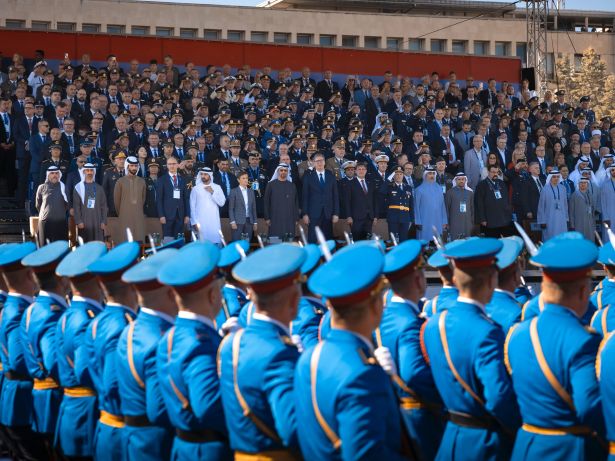
marking the Day of Serbian Unity, Freedom and the National Flag
By Darko Obradović
BELGRADE: Gulf leaders have made an impressive presence at Serbia’s largest military parade that highlighted shift in global defense ties.
United Arab Emirates President Shaikh Mohammed bin Zayed Al Nahyan, Dubai Crown Prince Shaikh Hamdan bin Mohammed bin Rashid Al Maktoum, Bahrain’s Shaikh Nasser bin Hamad Al Khalifa, National Security Advisor and Royal Guard Commander, Saudi Land Forces Chief of Staff Fahd Al Juhani, as well as other Arab guests, stood out at the large-scale military parade staged by Serbia, showcasing tanks, missile systems, and fighter jets.
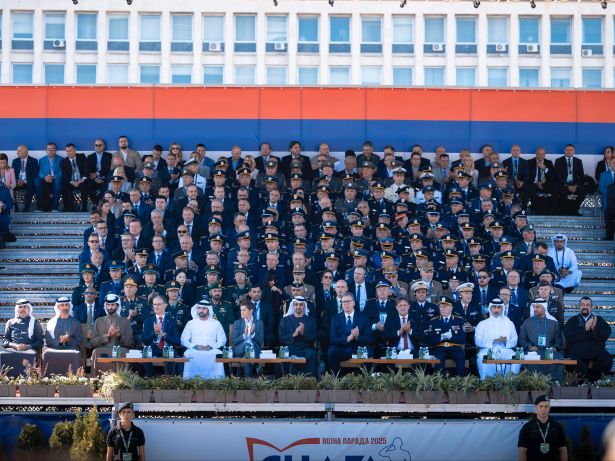
Serbia hosted two colossal military-political events, the military parade and Partner 2025, that left no one indifferent.
The outstanding presence of Gulf leaders at the Serbia parade highlighted how “Strength of Unity,” based on the list of attendees, maintained a balance between strategic relations, military equipment marketing, and regional ties.
The strategic partnership between Serbia and the United Arab Emirates positions Serbia as a key interlocutor with other Arab countries, opening significant opportunities for future military cooperation, investments, and technology transfers in the defense sector.
At the “Partner 2025” military exhibition, among the displayed assets of the Serbian Armed Forces were three unmanned aerial vehicles from the UAE-based company “Edge.”
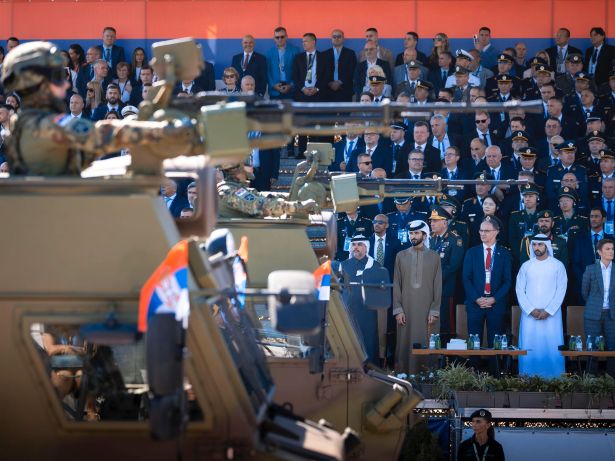
Officials said the parade was Serbia’s biggest display of army strength and Serbia’s president Aleksandar Vučić emphasized “the country’s ability to defend its independence and sovereignty, and act as a deterrent against foreign aggressors.”
Shaikh Nasser praised the military parade, saying it demonstrated the high level of efficiency and discipline of the Serbian Armed Forces and their remarkable development in training and armament.
He said that Bahrain’s participation in Serbia’s celebrations was within the close historical relations between the two countries, and noted Bahrain’s keenness to continue strengthening them to serve mutual interests and support security and peace efforts at the regional and international levels.
There were multiple reasons for organizing the military parade, but there were also security challenges. The parade titled “Strength of Unity” sparked strong reactions and analyses among partners and rivals, but the current divisions in Serbian society have not succeeded in spilling over to the military, which remains a fundamental pillar of Serbian society and its perception.
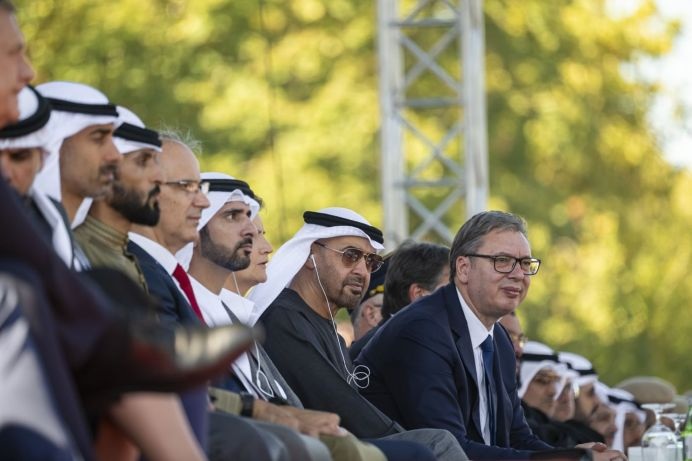
The parade was accompanied by the delivery of new Israeli systems—PULS multiple rocket launchers. Elbit’s PULS features dedicated launchers with canisters for 18 rockets of 122mm with a range of up to 35km, to “Predator Hawk” rockets with a range of up to 300km (2 per launcher). At the military parade, systems with four canisters for “Extra” rockets with a 150km range and a container with two “Predator Hawk” rockets were showcased.
Additionally, a joint flyover of French Rafales and modernized Serbian MiG-29s was featured.
These two major acquisitions of weapons and military equipment can be considered historic, as they mark the first significant procurements of Western systems. This move has initiated an irreversible transformation of Serbia’s armed forces toward Western systems.
The parade also showcased newly-introduced systems from Russia, specifically electronic warfare or electronic action systems.
Questions were raised whether Serbia will, at some point, share the functionality of these systems with its Western partners and about the fate and role of these systems if Serbia, in the future, becomes a NATO member or gains the status of a major non-NATO ally of the United States.
The military parade demonstrated Serbia’s ability to enhance its military capabilities in complex geopolitical conditions through diversified procurement. At the same time, Serbia showcased the capabilities of its domestic military-industrial complex to develop systems based on the experience of modern armed conflicts.
The Serbian military-industrial complex is characterized by a private-state fusion of research and development capacities, as well as serial production.
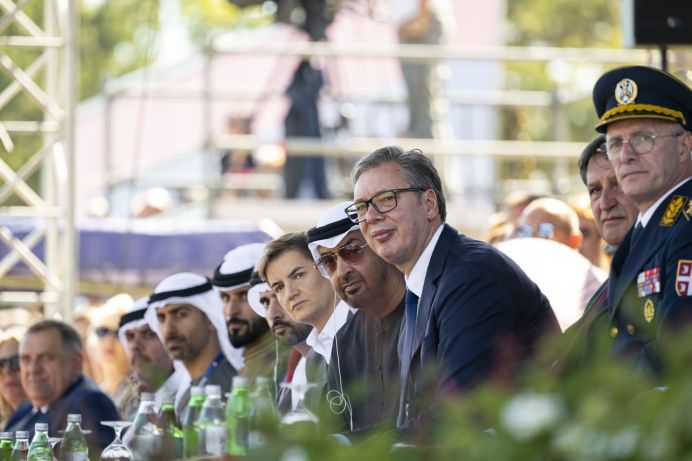
The French aircraft were the only foreign participants in the parade, sending a strong political message. The United States was represented at the level of its state partnership with the Ohio National Guard, whose commander attended the parade.
The parade upholds Serbia’s foreign policy based on four pillars, with a significant question mark regarding the process of establishing interoperability and supply chains for all displayed systems. The acquisition of French and Israeli equipment is undoubtedly a turning point not seen since 1955.
The timing of the military parade coincided with the “Partner 2025” event, forming a logical whole between the two. Serbia is showcasing what it has, what it produces, and what it aims to acquire. In terms of foreign exhibitors at the fair, Chinese companies dominated, followed closely by those from the Czech Republic.
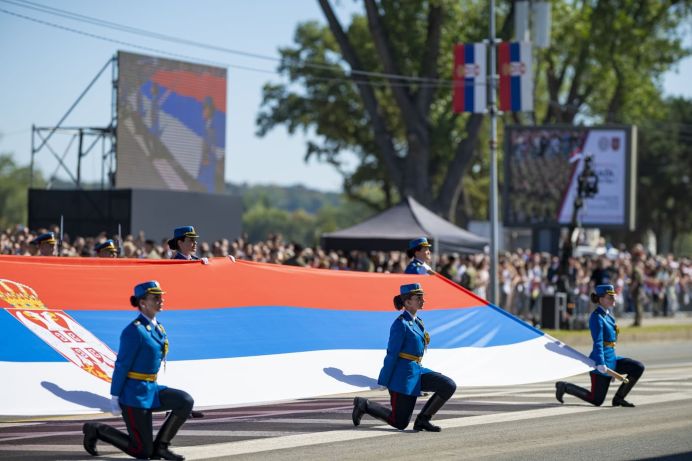
Despite these challenges, “Partner 2025” has attracted 30% more exhibitors compared to previous years. The potential of Serbia’s military-industrial complex is primarily reflected in domestic solutions such as the NORA B-52, Pasars, Mali Miloš in multiple variants, the Miloš and Lazar armored wheeled vehicles in various versions, and the increasingly sought-after multiple rocket launchers like our Tamnava.
Darko Obradović holds a master’s degree in digital media and communications and a degree in Security Studies education from Belgrade University. He is an expert in the field of hybrid operations and geopolitics. He is the author of several scientific papers, analyses, articles and columns in the field of security science, international relations and geopolitics.




